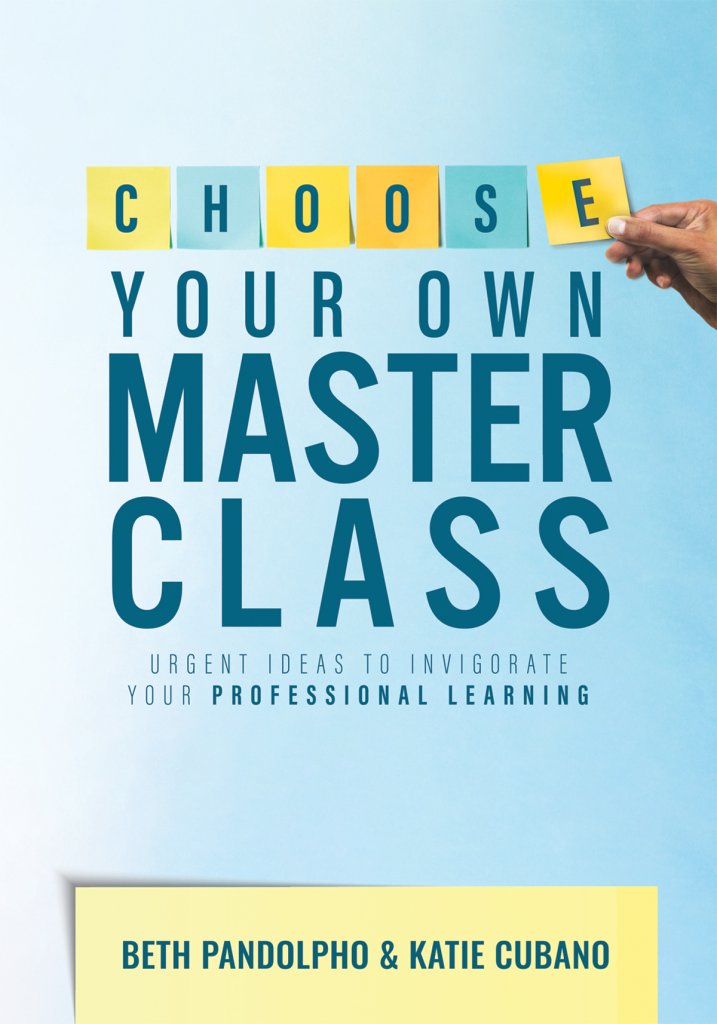Reframing the Stories We Tell About Students
By focusing on students’ assets and strengths, teachers can help them see their potential and begin working to achieve it.
Your content has been saved!
Go to My Saved Content.As former language arts teachers, we (Beth and Katie) had long understood the power of story and the implications of the narratives we construct about ourselves. And yet, we hadn’t applied this same understanding to consider that the type of narratives we construct about our students may actually perpetuate the precise problems we are trying to solve. In our roles as instructional coaches, we’ve identified with a more discerning eye that many rubrics categorize students as “inadequate,” many default gradebook comments are framed in the negative, and conversations about students primarily reflect their shortcomings, oftentimes without an equal emphasis on their strengths. These practices are embedded in our educational system, a system that advocates that we rank and sort students at every turn, whether it be through a standardized testing continuum, a grading profile, a behavior chart, or a placement in a leveled course.

True, we often use these data to attempt to find logic-based solutions for students by identifying the problems presented. But people are not problems to be solved, and we need to place an emphasis on how to work alongside our students and their families toward academic and overall well-being. As we continue to think deeply about Trabian Shorters’s definition of asset-framing (Skillman Foundation, 2018), we can’t help but continue to correct each other as we fall into the familiar patterns we’ve become accustomed to as longtime public educators. We are heartened by Adam Grant’s invitation to think again about the way we talk about students, and to examine if it is perhaps hindering our ability to both support them and have them see us as allies on their learning journey. For us, this quote on Shorters’s website has been resonating very deeply: “You can’t lift people up by putting them down.”
The intersecting work of Shorters, Gilbert, and Grant has challenged us to rethink how we can more effectively support our students by (1) equally recognizing them by their strengths and their challenges and (2) creating an inquiry-based classroom culture in which asking questions and exploring curiosities with the freedom to change one’s mind will increase personal growth and freedom for everyone. Consider practicing asset-framing, creating space for magic, and valuing questions over answers.
Practicing Asset-Framing
Shorters’s philosophy reminds us of something we both already knew to be true as parents: we try (yet do not always succeed) to notice what our children are doing right and help them build on these strengths, rather than focusing too much on their shortcomings. When we are able to focus on their strengths, our children are empowered to tell more hopeful stories about themselves, whether those stories bolster their success in learning to tie their shoes independently or to pass geometry. Our children are much more likely to see the intrinsic benefits in building new habits when we emphasize skills they already possess.
Further, as parents and educators, we know that the words we use in our positions of authority have the power to guide those we lead toward positive change, yet also derail their progress and even shape their perception of who they are and what they are capable of doing and becoming. It is through this lens that we are developing a greater understanding of why, as educators, we must use language very intentionally when we talk with students and about students.
For example, in the case of a student who is chronically absent (which may be triggering for us, because how can we help a student who does not come to school?), we might assume that this student and their family simply do not value education—that they don’t care enough. Practicing asset-framing, we could instead attempt to learn what their hopes and aspirations are, and use that information to work together to create a game plan that does not ignore the problem of chronic absence. We could partner with guidance counselors and administrators to consider what assets the student and family have that can be harnessed in order to address the root causes, whether these causes are logistical, psychological, or otherwise.
With asset-framing, no one is behind on a learning curve or inadequate on a rubric; every person is valued for who they are, and educators are here to work alongside them accordingly, without judgment. This mindset paves the way for telling truer stories about our students that are framed positively and focused on their strengths. These more expansive narratives create the space for our students to learn, grow, and flourish without being limited by our perspectives or the language we use.
Shorters reminds us that when the language we use is inaccurate, it misdirects our actions and leads us to solve the wrong problems. Earlier, we discussed replacing the word remedial with developmental (page 180); the critical difference is that a remedial course presupposes we are remediating students until they are somehow “fixed,” whereas a developmental course accepts students at their current skill level to develop and improve at their own pace. Our students are never the problem. Never. And we need to be wary of any language that indicates otherwise.
Creating Space for Magic
In her book Big Magic: Creative Living Beyond Fear, Elizabeth Gilbert (2015) writes about the importance of living a life driven more by curiosity than by fear, and asks the question, “Do you have the courage to bring forth the treasures that are hidden within you?” (p. 8). She suggests that when you unleash these treasures, you open yourself to experiencing magic. Both of us, Beth and Katie, are intimately aware of how both our fears of not being good enough and the stories we tell ourselves can hinder or empower our ability to follow our curiosities. For Beth, her curiosity was the desire to become a writer. Even though she was told throughout high school and college that she had a talent for writing, she never fully believed it. She told herself that she was the kind of writer who could write a good essay, craft beautiful personal correspondence, or persuade someone through writing to change their mind. She told herself that hers was certainly not the kind of writing that was of publishable quality. As she got older, she further solidified this truth that, of course, she was a good writer. She was an English teacher! It wasn’t until twenty years later that she began to rethink whether she might have something to say that could be worth reading and putting out into the world.
For Katie, overcoming a false narrative about identity helped her take a leap in a new career direction. The idea of leaving the classroom to do anything else but teach was unthinkable, even after a decade of teaching and leading from the classroom in both informal and formal teacher leadership roles. It wasn’t until life (as it always does) threw her family some curveballs that she began to renegotiate her relationship to this narrative. In examining what made her define her identity only through her work in the classroom, she realized that her deep commitment to justice and excellence in education for every child was what mattered most.
She also realized that some of the ways she had conceived of her identity were unhealthy, driven by ego, overwork, and at times saviorism. There were, in fact, plenty of ways to realize her commitment in the field of education, and she gave herself permission to look for new roles that served this commitment while respecting her and her family’s needs for a different work-life balance. It was then that her curiosity led her to ultimately accept an instructional coach role, which has helped her grow and change in many surprisingly wonderful ways while remaining a teacher at heart. Beyond the benefits of telling yourself a truer story and embracing what is right for you, there are consequences if you do not. Poet Joy Harjo (2012) writes in her memoir, Crazy Brave, “I believe that if you do not answer the noise and urgency of your gifts, they will turn on you. Or drag you down with their immense sadness at being abandoned” (p. 135).
It is very likely that many of our students are isolated in the stories they tell themselves that might be inhibiting their willingness to take risks, seize opportunities, and build on strengths others have noted but they themselves fail to recognize. We can’t help but think, Is there a way we can create a more affirming experience for our students so they can transcend their self-doubt to confidently explore their curiosities and share their voices and gifts with their world?
We do believe that we have the capacity to create this kind of magic for students in our classrooms. To us, it begins with recognizing the humanity and inherent worth of each of our students and designing learning experiences that offer them opportunities to engage with their curiosities and truly discover their boundless potential. It continues with offering tasks that are accessible to all the students in the classroom regardless of ability or learning differences. These tasks then enable students to pursue different pathways and reach heights that are commensurate with their skills and strengths. It is our job, then, to work alongside them to support them on their individual journeys and provide them with feedback and resources along the way. As we work alongside our students and learn more about them and the stories they are currently telling themselves, we can gently guide them to reframe their story arcs so they become more accurate and expansive. In the process, we might discover that our stories about them are likewise in need of revision.
Used with permission. Excerpt from Choose Your Own Master Class: Urgent Ideas to Invigorate Your Professional Learning by Beth Pandolpho and Katie Cubano. Copyright 2023 by Solution Tree Press, 555 North Morton Street, Bloomington, IN 47404, 800.733.6786, SolutionTree.com. All rights reserved.
